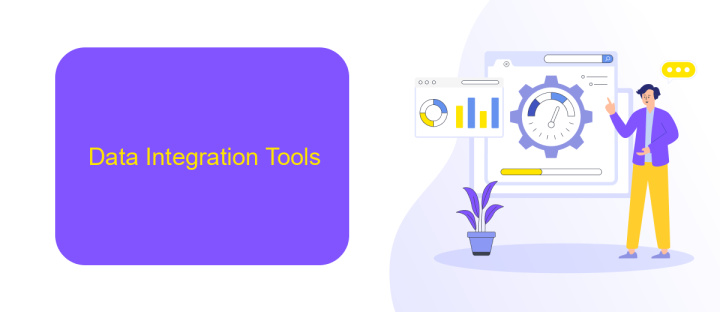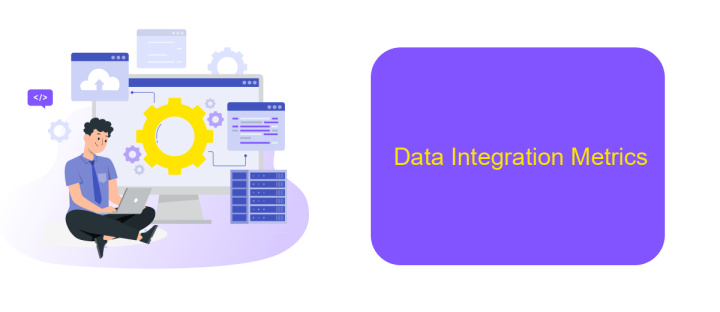Types of Integration Data
In today's data-driven world, the integration of data from various sources has become essential for businesses to gain comprehensive insights and make informed decisions. This article explores the different types of data integration, including ETL (Extract, Transform, Load), ELT (Extract, Load, Transform), and real-time data integration, highlighting their unique features and applications in modern data management strategies.
Integration of Data Structures
Integration of data structures involves combining different data sets into a unified system to improve data accessibility and usability. This process can streamline operations, enhance data analysis, and support better decision-making. Effective integration requires careful planning and the right tools to ensure data consistency and integrity.
- Identify the data sources to be integrated.
- Map out the structure and relationships of the data.
- Use integration tools like ApiX-Drive to automate the process.
- Validate and clean the data to ensure accuracy.
- Monitor and maintain the integrated data system.
Tools like ApiX-Drive simplify the integration process by providing a user-friendly interface and automation capabilities. These tools can connect various applications and data sources, reducing the need for manual data handling. With proper integration, organizations can achieve a cohesive data environment that supports comprehensive analysis and informed decision-making.
Data Integration Tools

Data integration tools are essential for combining data from different sources into a unified view, enabling more comprehensive analysis and decision-making. There are various tools available, each with unique features tailored to specific needs. Some of the most popular tools include Talend, Informatica, and Microsoft SQL Server Integration Services (SSIS). These tools offer robust capabilities for data extraction, transformation, and loading (ETL), ensuring data consistency and quality across different systems.
Another notable tool is ApiX-Drive, which simplifies the integration process by allowing users to connect various applications and automate data flows without requiring extensive coding knowledge. ApiX-Drive supports a wide range of platforms and services, making it a versatile solution for businesses of all sizes. With its user-friendly interface, even non-technical users can set up integrations quickly and efficiently, ensuring that data is synchronized and up-to-date across all connected systems.
Data Integration Services

Data integration services play a crucial role in modern businesses by streamlining the process of combining data from various sources into a unified view. These services ensure that data is consistent, accurate, and readily available for analysis and decision-making. By utilizing data integration services, organizations can improve operational efficiency, enhance data quality, and gain valuable insights.
- ETL (Extract, Transform, Load) Services: These services extract data from different sources, transform it into a suitable format, and load it into a data warehouse or other storage systems.
- Data Replication Services: These services copy data from one system to another, ensuring that data is synchronized across multiple platforms in real-time.
- API Integration Services: These services connect different applications and systems through APIs, facilitating seamless data exchange and communication.
- Data Virtualization Services: These services provide a virtual view of data from various sources without physically moving the data, allowing for real-time access and analysis.
One notable example of a data integration service is ApiX-Drive, which simplifies the process of setting up integrations between various applications and services. With its user-friendly interface and extensive library of pre-built connectors, ApiX-Drive enables businesses to automate workflows and ensure that data flows smoothly across their systems. By leveraging such services, organizations can focus on their core activities while maintaining a robust and integrated data environment.
Data Integration Metrics

Measuring the effectiveness of data integration is crucial for ensuring that the process meets business objectives and operates efficiently. Data integration metrics provide insights into the quality, performance, and reliability of integrated data systems, helping organizations to make informed decisions and optimize their workflows.
Key metrics to consider include data accuracy, data latency, error rates, and system uptime. These metrics offer a comprehensive view of how well the integration process is functioning and where improvements may be needed. By closely monitoring these metrics, businesses can identify and resolve issues promptly, ensuring seamless data flow across all systems.
- Data Accuracy: Measures the correctness and consistency of data across integrated systems.
- Data Latency: Tracks the time delay between data generation and its availability in the integrated system.
- Error Rates: Indicates the frequency of errors occurring during the data integration process.
- System Uptime: Monitors the availability and reliability of the integration system.
Using tools like ApiX-Drive can simplify the monitoring and management of these metrics. ApiX-Drive provides real-time analytics and automated alerts, enabling businesses to maintain high standards of data integration and quickly address any issues that arise.


Data Integration Best Practices
Effective data integration requires careful planning and execution to ensure seamless operations and accurate data flow. One of the best practices is to establish clear objectives and goals for your integration project. This involves identifying the data sources, understanding the data formats, and determining the desired outcomes. Proper documentation and mapping of data flow can prevent potential issues and streamline the integration process.
Utilizing reliable integration tools and platforms can significantly enhance the efficiency of the process. ApiX-Drive, for instance, offers a user-friendly interface and robust features that simplify the setup and management of data integrations. Automating data transfer between various applications reduces manual errors and saves time. Regular monitoring and maintenance of the integration setup are crucial to ensure consistent performance and to quickly address any issues that may arise. By following these best practices, organizations can achieve a smooth and effective data integration process.
FAQ
What are the main types of data integration?
What is manual data integration?
How does middleware data integration work?
What are the benefits of using an integration platform?
Can I integrate data from different sources without coding?
Apix-Drive is a universal tool that will quickly streamline any workflow, freeing you from routine and possible financial losses. Try ApiX-Drive in action and see how useful it is for you personally. In the meantime, when you are setting up connections between systems, think about where you are investing your free time, because now you will have much more of it.

